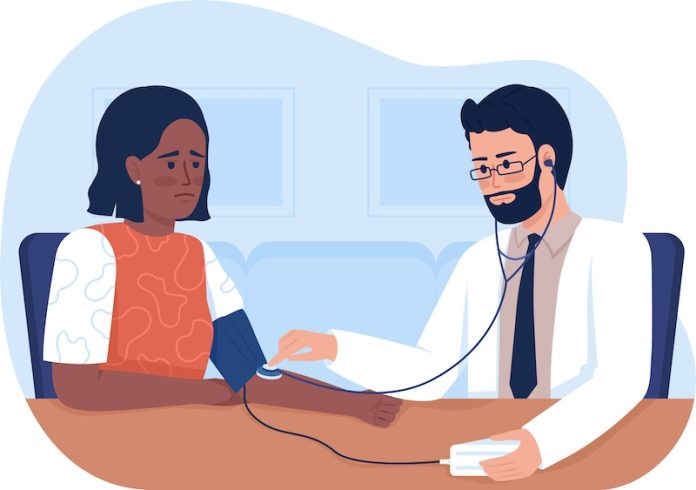
High blood pressure, also known as hypertension, is a common condition where the force of the blood against your artery walls is high enough that it may eventually cause health problems, such as heart disease.
There are two main types of high blood pressure: primary (essential) hypertension and secondary hypertension. Both types increase the risk of serious problems, including heart attack and stroke, but they have different causes and may require different treatments.
This review will help you understand the key differences between these two types of high blood pressure.
Primary hypertension is the most common type, affecting about 90-95% of people with high blood pressure. It develops gradually over many years and usually cannot be linked to one specific cause.
Several factors contribute to primary hypertension, including genetics, age, and lifestyle choices. For example, the risk of developing primary hypertension increases as you age, especially after the age of 65.
Additionally, a family history of hypertension, unhealthy eating patterns—particularly those high in salt—excessive alcohol intake, lack of physical activity, and being overweight can all play roles in its development.
On the other hand, secondary hypertension occurs much less frequently but develops due to an identifiable cause and can appear suddenly. This type of high blood pressure is caused by underlying conditions that affect the kidneys, arteries, heart, or endocrine system.
Secondary hypertension might account for 5-10% of all hypertension cases and can often be more severe than primary hypertension.
Common causes include kidney disease, adrenal gland tumors, certain congenital heart defects, medications (such as birth control pills, cold remedies, decongestants, and some prescription drugs), and illegal substances like cocaine and amphetamines.
Diagnosing the type of hypertension is crucial because it directs the treatment approach. For primary hypertension, lifestyle modifications such as improving diet, increasing physical activity, reducing alcohol consumption, and quitting smoking are usually recommended as first steps.
Medications might also be necessary depending on how high the blood pressure is and whether other risk factors for cardiovascular disease are present.
In cases of secondary hypertension, treating the underlying cause is often effective in reducing blood pressure. For instance, if a kidney condition is causing high blood pressure, treatment will focus on the kidney issue.
If a medication is the culprit, your doctor might adjust or change your prescription. Because of its potential severity and the specific conditions that cause it, secondary hypertension may require more specialized medical treatment compared to primary hypertension.
The implications of not managing high blood pressure are serious, regardless of the type. Uncontrolled hypertension can lead to a higher risk of heart attacks, strokes, kidney damage, and other serious health issues.
Therefore, understanding the causes and effective management strategies for both types of hypertension is crucial for anyone diagnosed with high blood pressure.
Regular check-ups are important because high blood pressure often does not cause noticeable symptoms until significant damage has occurred. These visits allow doctors to monitor blood pressure closely and adjust treatments as needed.
Whether managing primary or secondary hypertension, the goal is to keep blood pressure within a healthy range to minimize the risk of complications.
In conclusion, while primary and secondary hypertension share the common feature of high blood pressure, they differ significantly in their causes and treatments.
Recognizing the type you have is a step toward effective management, helping ensure a longer, healthier life. For anyone diagnosed with hypertension, working closely with healthcare providers to monitor and manage their condition is essential.
If you care about high blood pressure, please read studies about unhealthy habits that may increase high blood pressure risk, and drinking green tea could help lower blood pressure.
For more information about high blood pressure, please see recent studies about what to eat or to avoid for high blood pressure, and 12 foods that lower blood pressure.
Copyright © 2024 Knowridge Science Report. All rights reserved.



